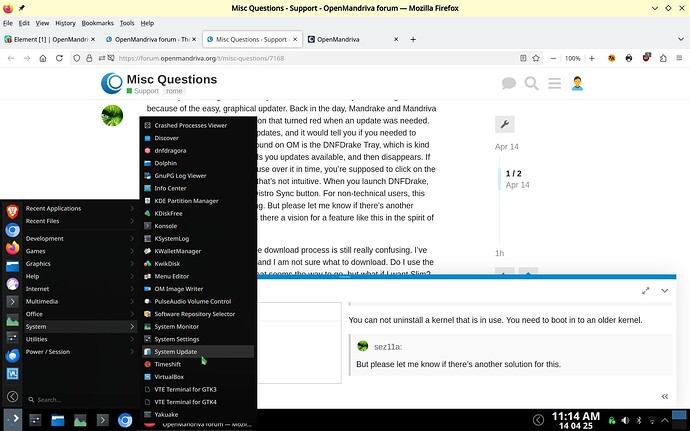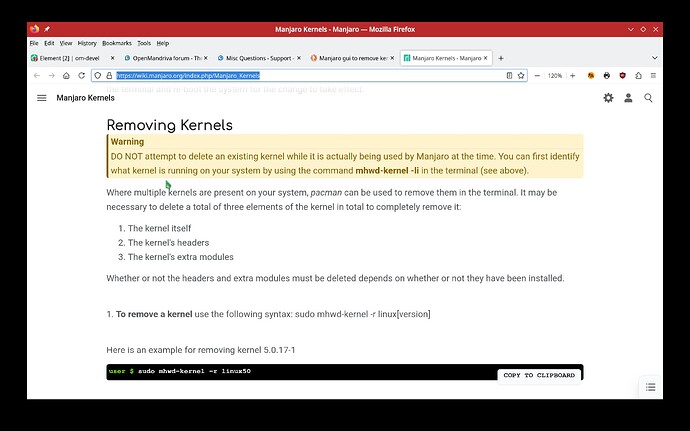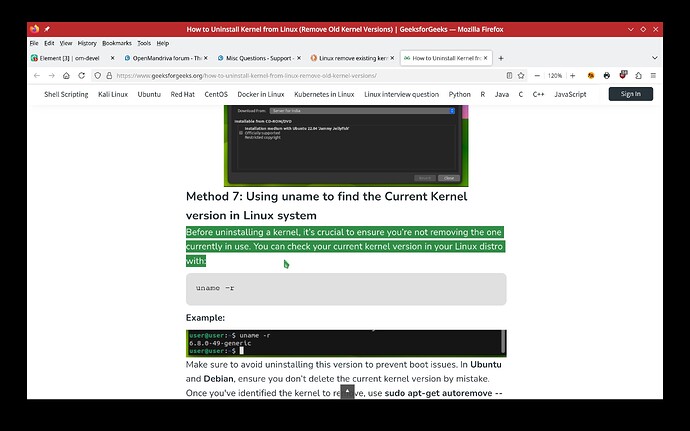Still testing OM ROME in a VM. Here are some things I’ve noticed that I wanted to ask about.
-
Somehow I wound up with kernel-rc-desktop installed and active. How did this happen? Is this supposed to happen? If I try to uninstall it with dnf at the CLI or dnfdragora, it says it’s protected and won’t do it. I don’t even see where it’s defined as protected in /etc/dnf. How do I get back on the released kernel?
-
It looks like I would have to adopt Flatpaks much more than I have so far. Work stuff like Slack, 3D printing stuff like Prusa Slicer, etc. Is there a particular strategy on what gets packaged for the distro and what doesn’t? For example, I think I saw somewhere that there’s a reluctance to package Electron apps (I don’t like them either and I try to keep them at a minimum, but sometimes they’re unavoidable).
-
I have my wife, daughter, and 77 year-old mother on Manjaro Linux right now, because of the easy, graphical updater. Back in the day, Mandrake and Mandriva had a super-easy to use tray icon that turned red when an update was needed. You could click it and run the updates, and it would tell you if you needed to reboot. The closest thing I’ve found on OM is the DNFDrake Tray, which is kind of unfriendly. It pops up and tells you updates available, and then disappears. If you do manage to get your mouse over it in time, you’re supposed to click on the Launch DNFDrake button, but that’s not intuitive. When you launch DNFDrake, you have to know to click the Distro Sync button. For non-technical users, this process could use some refining. But please let me know if there’s another solution for this. Barring that, is there a vision for a feature like this in the spirit of the old Mandriva?
-
Lunduke mentioned this, but the download process is still really confusing. I’ve been using Linux for 27 years, and I am not sure what to download. Do I use the Default Sourceforge button? That seems the way to go, but what if I want Slim? My work machine is Intel; my personal machine is AMD, do I have to download different versions for the two? Why, when other distros handle this with firmware files from Intel/AMD? What would happen if I installed the default version on my AMD-based Thinkpad?
Other things I’ve noticed are bugs, which I’m sure will be fixed (asking for the encryption pw twice; not prompting the second time; somehow winding up on an RC kernel) and a lack of common packages (pandoc), which the team is working on.
I want to emphasize this is feedback. I’m not knocking the distro; making a distro is hard. If it were easy, everyone would do it. ![]()


